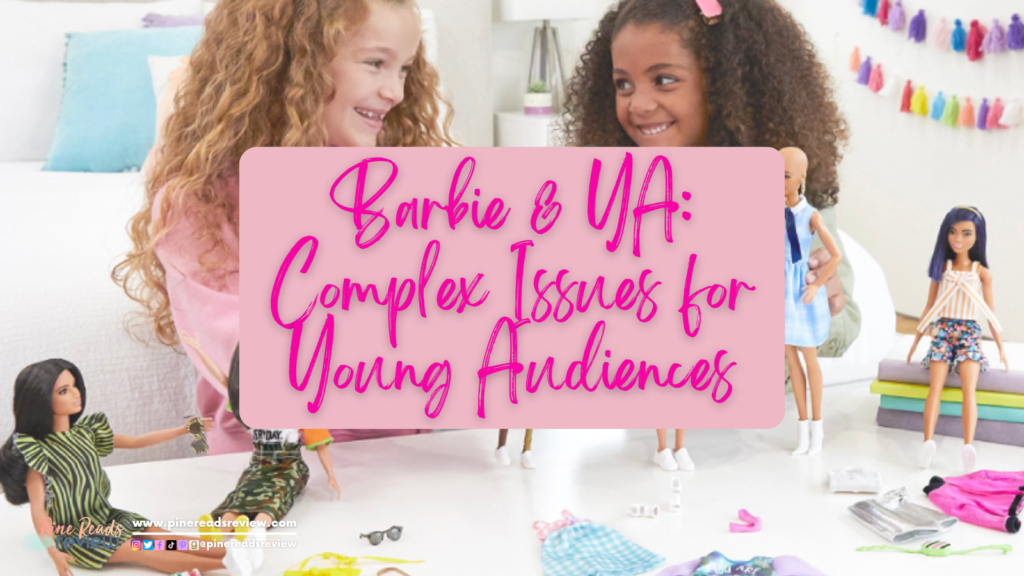
In the past month, millions of people flocked to theaters across the country to see Greta Gerwig’s Barbie. Diverse audiences watched an iconic childhood figure come to life on the big screen, and while the vibrant scenery, star-studded cast, and moving soundtrack all contributed to an alluring cinematic experience, the movie also did not shy away from addressing some difficult topics.
Although the toy at the heart of this move is typically marketed towards a younger demographic, Gerwig’s film navigated nuanced and seemingly more “adult” subjects like feminism, gender roles, patriarchy, grief, existentialism, and even death in a way that allows younger audiences to understand these issues while still enjoying their movie-going experience. Within Barbie’s heroic story of adventure and coming-of-age, genres which are a trademark of children’s and YA lit, emerged a deeper exploration of identity, gender norms, and empowerment.
This film opened the door for further conversation about these issues and presented them in a digestible way for audiences of all ages. In fact, in the days immediately following the release of Barbie, I noticed a significant increase in social media discourse about topics like gender norms, girlhood, patriarchal institutions, and internalized misogyny. These conversations taking place on a variety of platforms reflect the power of fiction and cinema to spark introspection and dialogue among people of all ages.
In a manner similar to Barbie, children’s and young adult literature has the power to wrap tough topics in captivating characters and fascinating plot lines that young readers can immerse themselves in. By framing issues in a way that younger readers can understand, and through characters they can relate to, novels open the door for deeper conversations about the world and destigmatize the discussion of these issues.
Pine Reads Review has written extensively about books that, while targeted towards younger audiences, tackle challenging subjects in a way their audience can understand.
For instance, just as Barbie discusses issues of mental health and depression through Barbie’s journey in the mortal world, many children’s books explore topics of mental health within the adventures of certain characters. Pine Reads Review compiled a list of children’s picture books that explore and work to destigmatize mental health and which can be helpful tools to spark a deeper conversation between parents and children about these subjects. You can read the full list here!
Young adult novels have also proven to be effective outlets to talk about important social issues, targeted towards teens who are often entering a transformative period in life, allowing them to learn more about and engage with the world around them. One of the most popular YA novels in the past decade, The Hate U Give by Angie Thomas, is a striking example. Thomas’s novel confronts police brutality, social justice movements, the power of protest, and socioeconomic barriers/disparities through the lens of Starr, the teenage protagonist. The strength of YA literature to tell real-world stories through realistic characters allows young adult audiences to relate to and reflect on key messages.
Even worlds that don’t look exactly like our own, found in fantasy or science fiction novels, can hold a mirror to modern day social issues. Some of the most popular young adult series of the 21st century, like Harry Potter and The Hunger Games, combine intricate plots and action-packed adventures with messages about prominent social issues.
Literature has the unique capability to help young people grapple with the issues they witness and hear about every day. Stories of all kinds can provide a thought-provoking source for young audiences to learn more about their world and also feel less alone in it.
Reading about (or watching) characters interacting with a world similar (or vastly different) to our own and undergoing experiences we can understand, teaches us empathy and understanding. While some children’s and young adult books are not as explicit in their discussion of difficult issues as Gerwig’s Barbie, they are. still important tools for starting conversations.
Overall, Gerwig’s Barbie embodies a practice that children’s and young adult literature has been engaging in for years: navigating difficult topics through creative, engaging, and digestible narratives that spark important conversations among younger audience members who may be encountering these issues for the first time.
Sam Parker, Pine Reads Review Writer